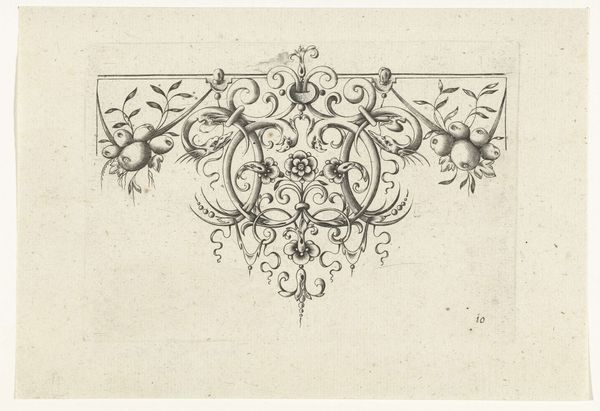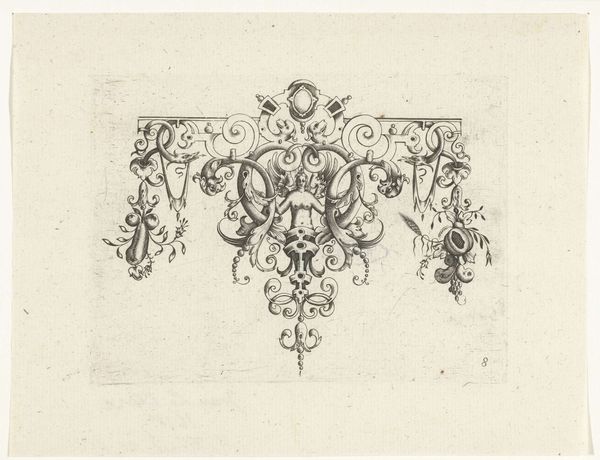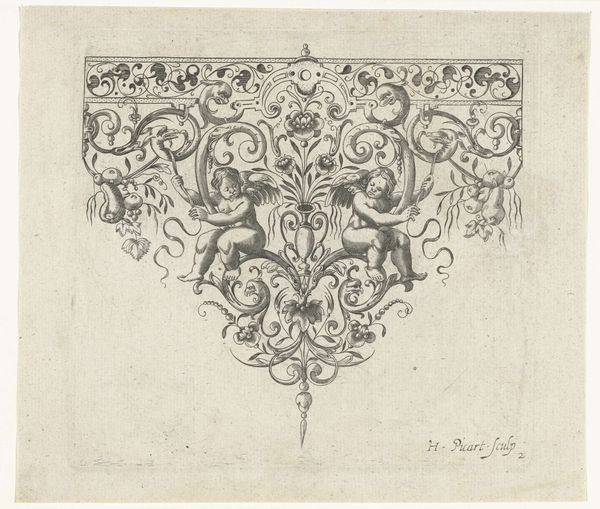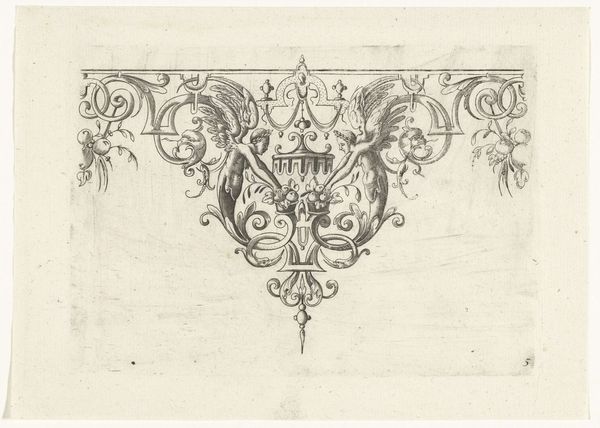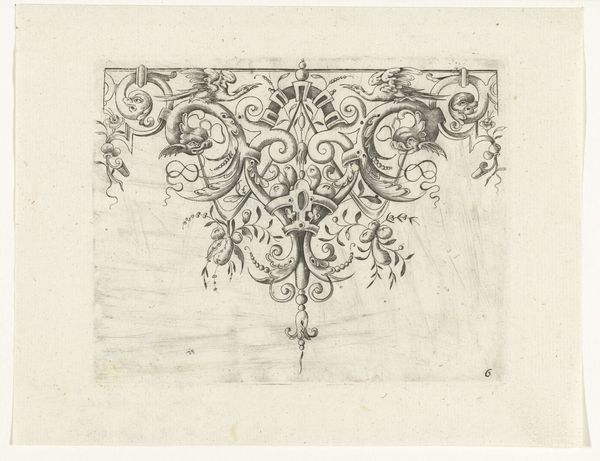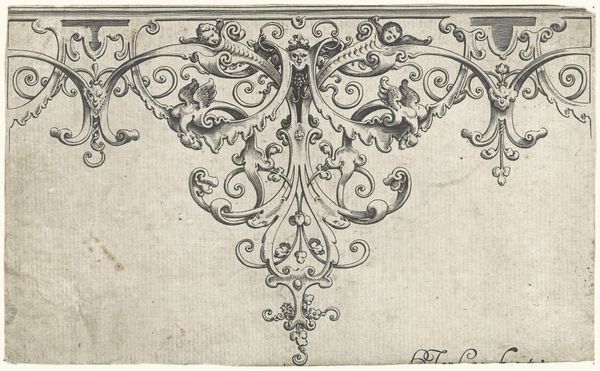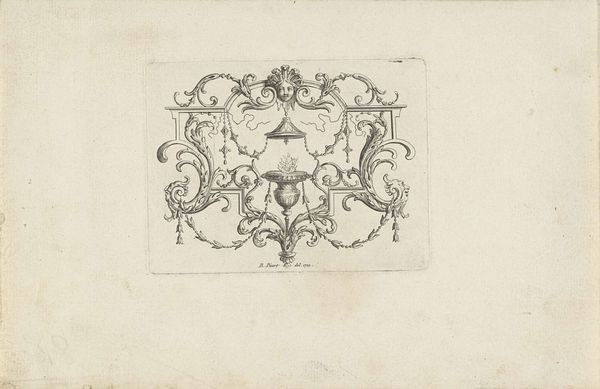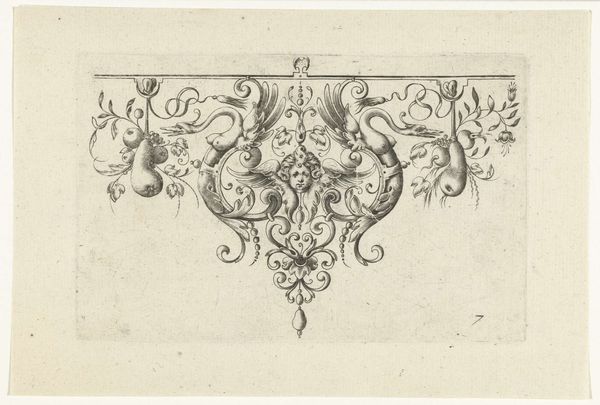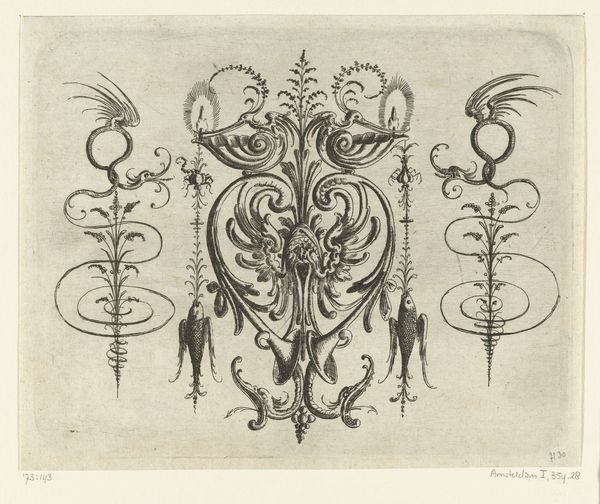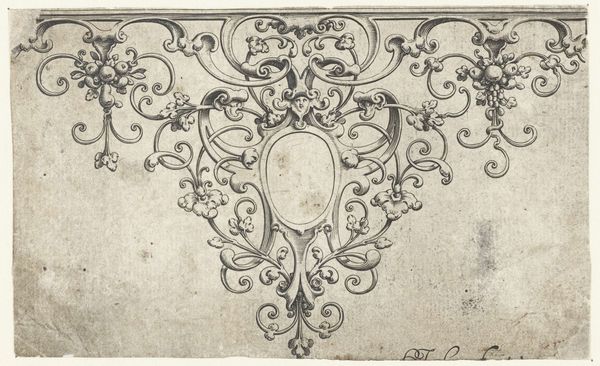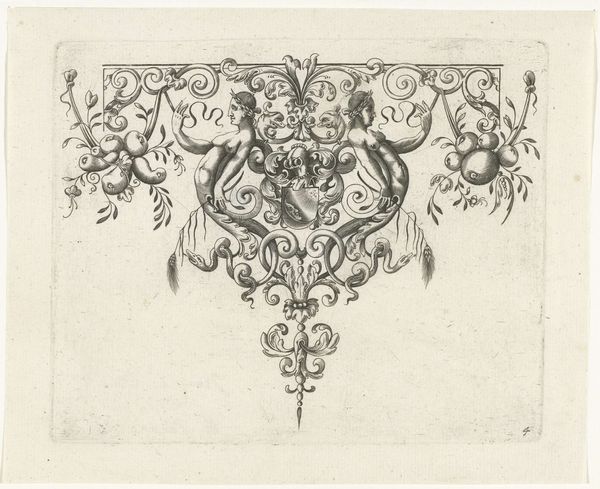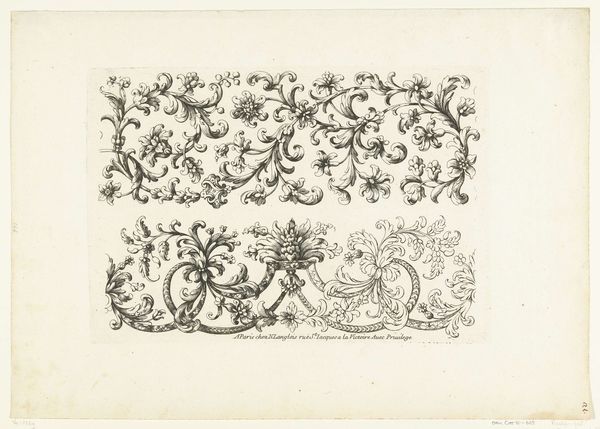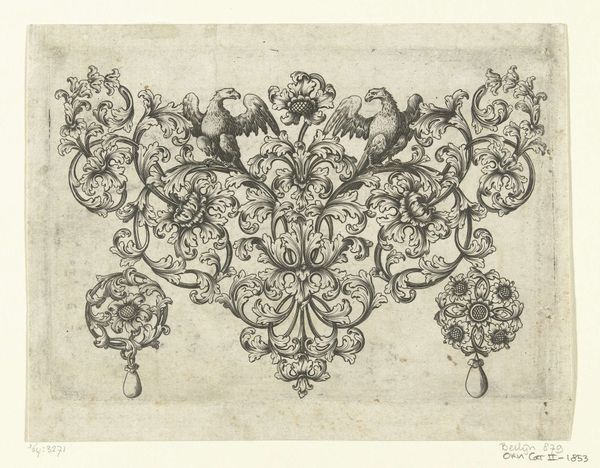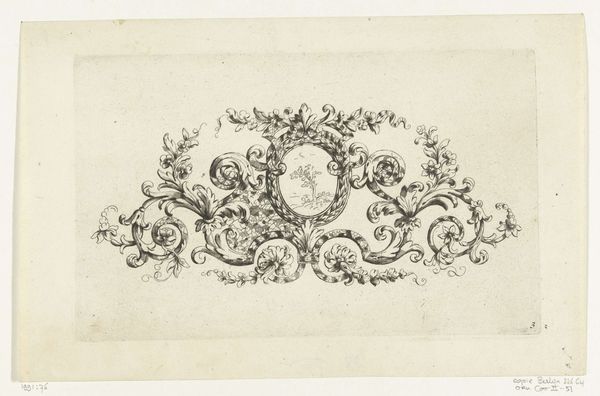
drawing, print, engraving
#
drawing
#
quirky sketch
#
baroque
#
pen drawing
# print
#
pen sketch
#
old engraving style
#
personal sketchbook
#
ink drawing experimentation
#
geometric
#
pen-ink sketch
#
line
#
pen work
#
sketchbook drawing
#
sketchbook art
#
engraving
Dimensions: height 93 mm, width 130 mm
Copyright: Rijks Museum: Open Domain
Editor: Here we have H. Picart’s “Randornament met baldakijn,” created in 1618. It's an engraving, meticulously rendered with incredibly fine lines. It feels so detailed, almost obsessive in its creation. What do you see when you look at it? Curator: I see a dense layering of materials and techniques employed to generate value, both literally and figuratively. Consider the process of engraving: the labor-intensive carving into the metal plate, the printing process itself, the circulation of this print. It all speaks to a deliberate system. Editor: So, you are interested in the work and effort that went into it rather than simply appreciating the aesthetics? Curator: Absolutely. The "aesthetics" themselves are a product of a very specific material and social context. Look closely—this elaborate ornament wasn't simply drawn, it was manufactured through a complex chain of production. Who was commissioning these engravings? What role did ornament play in expressing status and wealth in 17th century society? Editor: That's a point I hadn't really considered – who exactly would want to buy something like this? Was it for personal collections or was it for something else entirely? Curator: Perhaps for pattern books used by artisans, spreading styles and techniques. Or maybe wealthy patrons consumed these prints to decorate their homes with the latest trends. Either way, these objects become a method of dispersing status, not necessarily possessing it directly. And remember, producing ornament like this employed whole workshops of artisans. Editor: It really does change your perspective, thinking about all the labor involved, instead of only what the artist intended to mean, or the emotional context. Thank you. Curator: Exactly! Examining the labor embedded within shifts our understanding entirely, moving from idealized artistic creation to understanding it as an integral aspect of the wider systems of economy, culture, and material life.
Comments
No comments
Be the first to comment and join the conversation on the ultimate creative platform.
